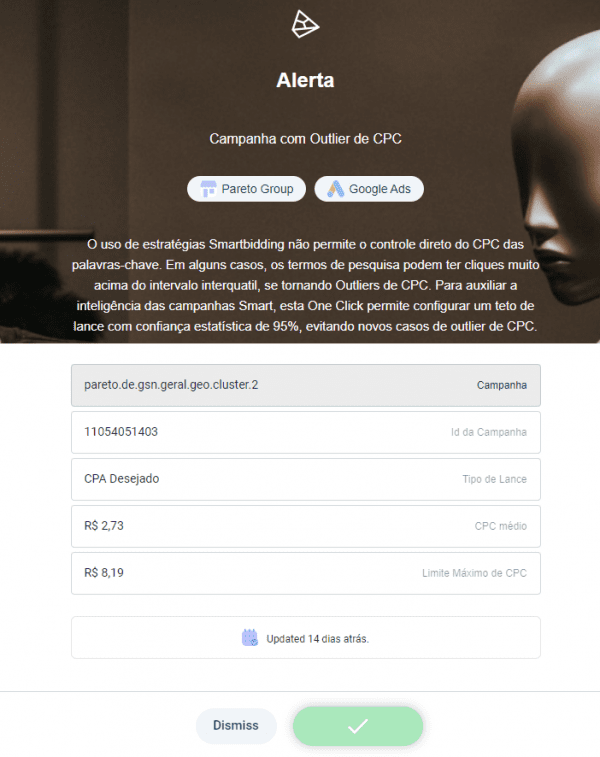Introduction
In this article, we're going to present some optimization strategies for campaigns that use Google Ads Smart Bidding strategies. To do this, we'll evaluate the CPC bids set by Google itself for your keywords.
If you want to know more about all the types of bidding strategies available for Google Ads, take a look at this other blog article.
We have prepared the following video explaining bid optimizations in Smart campaigns, the content of which is described in this article:
CPC bidding in Smart Campaigns
Have you noticed that some Google Smart Bidding campaigns, such as Target CPA or Target ROAS, have a high dispersion in the Cost Per Click (CPC) of search terms? It's very common to see search terms with extremely high CPCs, often higher than the Target CPA set for that campaign.
The reason for this variation is due to its optimization model. Google identifies thousands of user signals and, when it sees that the user is highly qualified, it bids higher to attract the click and potentially generate a conversion. However, this bid is not directly related to the desired CPA or ROAS.
For this reason, it is common for some search terms to exceed the average cost per click of the campaign. In some cases, exceeding the CPA target itself.
I'm going to show you one of the cases that prompted the development of Pareto automation to allow you to set a maximum CPC. In the table below we have data from a campaign using the metric of desired CPA.

The campaign analyzed in this example had a target CPA of $280.47. For this CPA, a click costing more than R$500 would not make sense, since we would need 2 contacts to be filled in order to meet the target, i.e. the minimum conversion rate of 200%.
How can it be solved?
Pareto Ads has a One-Click automation capable of limit the CPC of Smart Bidding campaigns. In other words, we will set a maximum amount that we are willing to bid for keywords in the specific campaign.
This is a modification that is not available directly on the platform, and needs to be applied via an API.
The intelligence of automation lies in calculation of the CPC value. The Interquartile Range statistical model was used for the calculation, limiting cases where the CPC is an outlier. In this model, we guarantee a statistical confidence of 95%.
Below, you can see the One-Click card generated by Pareto Ads, with the suggestion of applying a limit value to the campaign's CPC.

Here are Card's characteristics:
- It doesn't change the learning from the campaign;
- It has no impact on campaign inventory (average reduction in impression share of less than 1%);
- Statistical confidence above 95%;
In the case presented above, the savings made by setting the maximum CPC limit were over R$22,000. This optimization allowed for an increase of 6,000 clicks on the campaign, with no changes to the budget.
Conclusion
We've seen that, using Google's Smart Bidding strategies, it's possible to find keywords with a CPC well above the campaign average and the expected value.
For this reason, there was a need to have greater control over the bids applied by Google. Thus, by applying CPC cap optimization through Pareto Ads, we hope to save money and better allocate investments to your campaign.
If you want to know more about this automation and how to apply it to your Google account, contact your Account Manager.



